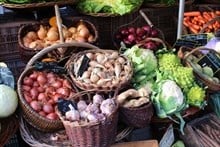
Bart van Dijk, partner at A.T. Kearney, explains that the Index came about when the A.T. Kearney team in Johannesburg requested that a specific index be developed for the continent.
The first reason for this is that while many South African retailers are tapping into Africa's retail opportunities, and South Africa has been used as a springboard into the rest of the continent, companies are applying different techniques and strategies. "So we thought: Is there a specific African strategy? Or could we help investors by compiling relevant lessons?"
Secondly, Africa has enormous potential and opportunity. "Consumer spend will grow from the current spend which is over US$700 000, to $1 trillion by 2030. However, retail spend is still low and non-organised. This presents an opportunity for formal retailers," says Van Dijk.
Thirdly, he says this is the right time to invest in Africa. "While very few African countries can compare to Asian countries, with African countries still operating off a low base, the continent is becoming more brand conscious."
The ARDI examined retail groceries and with country specifics as the focus. The Index was limited to sub-Saharan Africa. North Africa was excluded, as well as countries with less than 1.5 million inhabitants or/and a GDP of less than $1000. No comparisons were done to other countries such as China or India.
The Index gives a detailed report for each country and also identified a number of dos and don'ts, which included language and music is important, and do not ignore the poor. "There may be many poor people in Africa, but don't write them off. They still need goods and want goods," says Van Dijk.
Traditionally studies of this nature focus on market size and risk, he explains. "We also did [focus on market size and risk], but we added other dimensions to it, that is time pressure and market saturation. Time pressure refers to the speed of development in that country."
Marieke Witjes, manager at the firm, explained the findings of the Index. Of the top 10 countries, Rwanda was top of the list. This is not a country that is typically at the top of a retailer's list she says. "Its market size is low and not attractive to retailers, but the other factors are what pushed it to the front of the list ahead of countries such as Botswana."
Botswana from a market attractiveness is a more interesting market but it scored low in the other categories. This is not surprising given that most of the formal South African retailers are present there, making this a very saturated and competitive market.
South Africa is the most attractive market, but it is also the most saturated, scoring a zero in market attractiveness, therefore making it very difficult to enter this market.
Overall there were some key findings:
Despite the above, there is a window of opportunity for all retailers across all stages of advancement - whether you go into Rwanda or Botswana or South Africa.
The majority of countries are in the first and second stage of development, which means retail is confined to local goods purchased at local markets. "There is no supermarket culture. In stage two, the supermarket culture is emerging and malls and supermarkets with international brands are present,' says Witjes.
Price is an important driver in these two stages. In stage three, price is not a driver, and the consumer is sensitive to the shopping experience. South Africa, Botswana and Namibia are at stage three.
She explains that Rwanda has no supermarket culture yet. "There are a few Kenyan-owned supermarkets but these are not frequented enough. However, the government is doing much to create an environment for retail investors. Infrastructure is well-developed and the country has moved up the ranking for ease of doing business. Growth there is quick and retail space is opening up quickly. Basically, we are saying if you do not go there now, it will be too late in few years' time."
With no growth opportunities in Europe, international retailers turned their attention to South America, but Van Dijk says Africa is here and waiting for growth.
"This growth will also be sustainable. If I was an international retailer, I would be interested in the continent. If I was a South African retailer I would be expanding my current African footprint," concludes Van Dijk.
